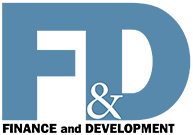Back to Basics
What Is Keynesian Economics?
Finance & Development, September 2014, Vol. 51, No. 3
Sarwat Jahan, Ahmed Saber Mahmud, and Chris Papageorgiou
The central tenet of this school of thought is that government intervention can stabilize the economy
Just how important is money? Few would deny that it plays a key role in the economy.
During the Great Depression of the 1930s, existing economic theory was unable either to explain the causes of the severe worldwide economic collapse or to provide an adequate public policy solution to jump-start production and employment.
British economist John Maynard Keynes spearheaded a revolution in economic thinking that overturned the then-prevailing idea that free markets would automatically provide full employment—that is, that everyone who wanted a job would have one as long as workers were flexible in their wage demands (see box). The main plank of Keynes’s theory, which has come to bear his name, is the assertion that aggregate demand—measured as the sum of spending by households, businesses, and the government—is the most important driving force in an economy. Keynes further asserted that free markets have no self-balancing mechanisms that lead to full employment. Keynesian economists justify government intervention through public policies that aim to achieve full employment and price stability.
The revolutionary idea
Keynes argued that inadequate overall demand could lead to prolonged periods of high unemployment. An economy’s output of goods and services is the sum of four components: consumption, investment, government purchases, and net exports (the difference between what a country sells to and buys from foreign countries). Any increase in demand has to come from one of these four components. But during a recession, strong forces often dampen demand as spending goes down. For example, during economic downturns uncertainty often erodes consumer confidence, causing them to reduce their spending, especially on discretionary purchases like a house or a car. This reduction in spending by consumers can result in less investment spending by businesses, as firms respond to weakened demand for their products. This puts the task of increasing output on the shoulders of the government. According to Keynesian economics, state intervention is necessary to moderate the booms and busts in economic activity, otherwise known as the business cycle.
There are three principal tenets in the Keynesian description of how the economy works:
• Aggregate demand is influenced by many economic decisions—public and private.Private sector decisions can sometimes lead to adverse macroeconomic outcomes, such as reduction in consumer spending during a recession. These market failures sometimes call for active policies by the government, such as a fiscal stimulus package (explained below). Therefore, Keynesian economics supports a mixed economy guided mainly by the private sector but partly operated by the government.
• Prices, and especially wages, respond slowly to changes in supply and demand, resulting in periodic shortages and surpluses, especially of labor.
• Changes in aggregate demand, whether anticipated or unanticipated, have their greatest short-run effect on real output and employment, not on prices. Keynesians believe that, because prices are somewhat rigid, fluctuations in any component of spending—consumption, investment, or government expenditures—cause output to change. If government spending increases, for example, and all other spending components remain constant, then output will increase. Keynesian models of economic activity also include a multiplier effect; that is, output changes by some multiple of the increase or decrease in spending that caused the change. If the fiscal multiplier is greater than one, then a one dollar increase in government spending would result in an increase in output greater than one dollar.

Keynes the master
Keynesian economics gets its name, theories, and principles from British economist John Maynard Keynes (1883–1946), who is regarded as the founder of modern macroeconomics. His most famous work, The General Theory of Employment, Interest and Money, was published in 1936. But its 1930 precursor, A Treatise on Money, is often regarded as more important to economic thought. Until then economics analyzed only static conditions—essentially doing detailed examination of a snapshot of a rapidly moving process. Keynes, in Treatise, created a dynamic approach that converted economics into a study of the flow of incomes and expenditures. He opened up new vistas for economic analysis.
In The Economic Consequences of the Peace in 1919, Keynes predicted that the crushing conditions the Versailles peace treaty placed on Germany to end World War I would lead to another European war.
He remembered the lessons from Versailles and from the Great Depression, when he led the British delegation at the 1944 Bretton Woods conference—which set down rules to ensure the stability of the international financial system and facilitated the rebuilding of nations devastated by World War II. Along with U.S. Treasury official Harry Dexter White, Keynes is considered the intellectual founding father of the International Monetary Fund and the World Bank, which were created at Bretton Woods.
Stabilizing the economy
No policy prescriptions follow from these three tenets alone. What distinguishes Keynesians from other economists is their belief in activist policies to reduce the amplitude of the business cycle, which they rank among the most important of all economic problems.
Rather than seeing unbalanced government budgets as wrong, Keynes advocated so-called countercyclical fiscal policies that act against the direction of the business cycle. For example, Keynesian economists would advocate deficit spending on labor-intensive infrastructure projects to stimulate employment and stabilize wages during economic downturns. They would raise taxes to cool the economy and prevent inflation when there is abundant demand-side growth. Monetary policy could also be used to stimulate the economy—for example, by reducing interest rates to encourage investment. The exception occurs during a liquidity trap, when increases in the money stock fail to lower interest rates and, therefore, do not boost output and employment.
Keynes argued that governments should solve problems in the short run rather than wait for market forces to fix things over the long run, because, as he wrote, “In the long run, we are all dead.” This does not mean that Keynesians advocate adjusting policies every few months to keep the economy at full employment. In fact, they believe that governments cannot know enough to fine-tune successfully.
Keynesianism evolves
Even though his ideas were widely accepted while Keynes was alive, they were also scrutinized and contested by several contemporary thinkers. Particularly noteworthy were his arguments with the Austrian School of Economics, whose adherents believed that recessions and booms are a part of the natural order and that government intervention only worsens the recovery process.
Keynesian economics dominated economic theory and policy after World War II until the 1970s, when many advanced economies suffered both inflation and slow growth, a condition dubbed “stagflation.” Keynesian theory’s popularity waned then because it had no appropriate policy response for stagflation. Monetarist economists doubted the ability of governments to regulate the business cycle with fiscal policy and argued that judicious use of monetary policy (essentially controlling the supply of money to affect interest rates) could alleviate the crisis (see “What Is Monetarism?” in the March 2014 F&D). Members of the monetarist school also maintained that money can have an effect on output in the short run but believed that in the long run, expansionary monetary policy leads to inflation only. Keynesian economists largely adopted these critiques, adding to the original theory a better integration of the short and the long run and an understanding of the long-run neutrality of money—the idea that a change in the stock of money affects only nominal variables in the economy, such as prices and wages, and has no effect on real variables, like employment and output.
Both Keynesians and monetarists came under scrutiny with the rise of the new classical school during the mid-1970s. The new classical school asserted that policymakers are ineffective because individual market participants can anticipate the changes from a policy and act in advance to counteract them. A new generation of Keynesians that arose in the 1970s and 1980s argued that even though individuals can anticipate correctly, aggregate markets may not clear instantaneously; therefore, fiscal policy can still be effective in the short run.
The global financial crisis of 2007–08 caused a resurgence in Keynesian thought. It was the theoretical underpinnings of economic policies in response to the crisis by many governments, including in the United States and the United Kingdom. As the global recession was unfurling in late 2008, Harvard professor N. Gregory Mankiw wrote in the New York Times, “If you were going to turn to only one economist to understand the problems facing the economy, there is little doubt that the economist would be John Maynard Keynes. Although Keynes died more than a half-century ago, his diagnosis of recessions and depressions remains the foundation of modern macroeconomics. Keynes wrote, ‘Practical men, who believe themselves to be quite exempt from any intellectual influence, are usually the slave of some defunct economist.’ In 2008, no defunct economist is more prominent than Keynes himself.”
But the 2007–08 crisis also showed that Keynesian theory had to better include the role of the financial system. Keynesian economists are rectifying that omission by integrating the real and financial sectors of the economy.■
Sarwat Jahan is an Economist and Chris Papageorgiou is a Deputy Division Chief in the IMF’s Strategy, Policy, and Review Department. Ahmed Saber Mahmud is the Associate Director of Applied Economics at Johns Hopkins University.


